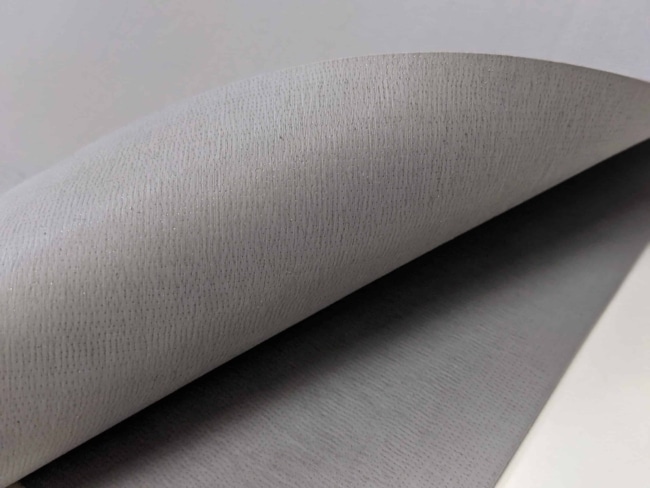RFI/EMI/EMC Shielding

RFI/EMI/EMC C Wrap

RFI/EMI/EMC Bake & Peel

RFI/EMI/EMC Conductive Fabric
RFI/EMI/EMC Conductive Silicone

RFI/EMI/EMC Conductive Tapes

RFI/EMI/EMC Foil Tape

RFI/EMI/EMC Gap-Pad

RFI/EMI/EMC Knitted Mesh

RFI/EMI/EMC Orientated Wire

RFI/EMI/EMC Shielded Windows

RFI/EMI/EMC T Flex

RFI/EMI/EMC T Gon

RFI/EMI/EMC T Guard
RFI/EMI/EMC
ASG offers a wide range of materials, thanks to a vast network of suppliers and manufacturers, some of which are needed for specific applications. One such range of products on offer from our vast catalogue is RFI/EMI/EMC shielding materials, which consists of a varied choice of material types each with its own unique properties to meet particular application demands and levels of insulation. Each type of RFI/EMI/EMC material is manufactured using different processes and formulations of fibres/papers/polymers etc. Some of the more rigid materials are manufactured in sheet form, in a range of thicknesses, whereas some of the very thin papers or films are manufactured in rolls, which can be cut down in finished parts ready for use within your application.
What are RFI/EMI/EMC Materials?
RFI/EMI/EMC materials are designed to protect electronic devices from disturbances from RFI (radio frequency interference) and EMI (electromagnetic interference) and also to insulate devices ensuring they aren’t causing the interference. ASG can offer a range of products from this material either in pre-cut parts or as complete rolls and sheets so customers or end-users can cut them down into sheets, strips, gaskets, pads or washers as and when they’re needed.
Why use RFI/EMI/EMC Materials?
All electronic devices can generate electromagnetic or radiation interference (RFI-Radio Frequency Interference and EMI-Electromagnetic Interference), these interferences can cause disturbances within electronic devices resulting in a reduction in the effectiveness of the circuit within the device. Electromagnetic Compatibility (EMC) is the term used to measure a device’s ability to operate within its environment whilst not affecting the operation of other equipment within its surroundings. Using RFI/EMI materials within electrical devices, create a shield and therefore reduce the risk of interference.
RFI/EMI/EMC shielding products Available
When choosing Advanced Seals & Gaskets Ltd for your shielding needs, you are sure to be offered a number of material options, thanks to our network of material manufacturers and suppliers. Our most popular include:
Conductive Fabric is a polyester or nylon fabric that can be nickel/copper or silver-plated to create a highly conductive material. This fabric is wrapped around a sponge and formed into usable profiles such as gaskets.
Conductive Silicone gaskets are produced using a silicone or fluorosilicone material that has been impregnated with electrically conductive particles prior to being cured. Conductive Silicone gaskets not only provide EMI/RFI shielding but will also act as seals against dust and water.
Gap Pads can also be called filler pads, made from a silicone polymer combined with a thermal substance such as ceramic and then cured. Gap pad gaskets are used to fill uneven surfaces and air gaps which provide a thermal interface between heat sinks and electrical devices.
Knitted Mesh or knitted wire mesh is created by knitting or weaving wires such as aluminium, steel, Monel or tin-plated copper-clad steel in sections or specifically shaped gaskets. This mesh can be used on its own or as a sleeve wrapped over a sponge such as neoprene, silicone or EPDM to create a compressible gasket.
Oriented Wire is manufactured using silicone sponge and solid variants, combined with a large number of wires which are embedded vertically into the polymer. Oriented wire gaskets provide a high level of oil-resistant shielding as well as environmental protection.
Sil-Pad gaskets perform in a similar way to gap-pads but are more flexible and comfortable as the material is constructed from a variety of material combinations including fibreglass, silicone rubber, polyamide/polyester films and fillers used to enhance performance. Sil pad gaskets are used to electrically isolate the semiconductor from the heat sink.
T-flex is a soft gap-filling interface pad composed of a silicone elastomer, boron nitride filler and reinforced with fibreglass. Tflex is naturally tacky and so doesn’t require additional adhesives to be applied. Tflex is a cost-effective gap filler thermal interface material with excellent thermal performance, it is used in applications such as cooling components, storage drives, heat pipes, engine control units and telecommunications.
Tgon is manufactured in various grades and thicknesses using synthetic graphite. Tgon gaskets are generally used for thermal transfer and conductivity as opposed to electrical isolation.
Tguard is produced using a glass fibre supported silicone elastomer with ceramic oxide filler, to create a thermally conductive and electrically insulating material.
Benefits of using RFI/EMI/EMC Materials
Using RFI/EMI/EMC products within electronic devices creates a shield, which in turn brings a number of benefits, these materials fill or cover gaps between conductive paths ensuring a smooth flow of current. They also prevent electromagnetic waves internal and external from interfering with devices and circuits. RFI/EMI/EMC material shielding properties also allow for a number of electrical devices to operate correctly even in the presence of each other as the Radio Frequency Interference and Electromagnetic Interference levels are controlled.
Material Enquiry
For more details use the form below or contact us on 01384 469100.
Material Specification
Full technical data can be supplied upon request,
or downloaded from our online portal.





















